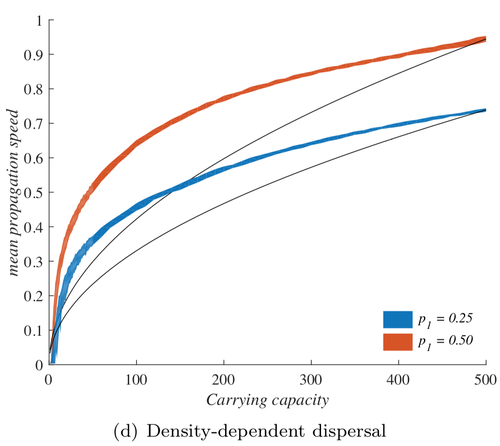
HAZLERIGG Charles
- Ecotoxicology, Enviresearch Ltd., Newcastle-upon-Tyne, United Kingdom
- Environmental risk assessment, Modelling
Recommendations: 0
Review: 1
Review: 1

Chemical effects on ecological interactions within a model-experiment loop
A model-experiment loop to optimise data requirements for ecotoxicological risk assessment with mesocosms
Recommended by Volker Grimm based on reviews by Charles Hazlerigg and Peter VermeirenIn Ecotoxicology, the toxicity of chemicals is usually quantified for individuals under laboratory conditions, while in reality individuals interact with other individuals in populations and communities, and are exposed to conditions that vary in space and time. Micro- and mesocosm experiments are therefore used to increase the ecological realism of toxicological risk assessments. Such experiments are, however, labour-intensive, costly, and cannot, due to logistical reasons, implement all possible factors or interests (Henry et al. 2017). Moreover, as such experiments often include animals, the number of experiments performed has to be minimized to reduce animal testing as much as possible.
Modelling has therefore been suggested to complement such experiments (Beaudoin et al. 2012). Still, the population models of the species involved need to be parameterized and can thus require a large amount of data. However, how much data are actually needed is usually unclear. Lamonica et al. (2022) therefore focus on the challenge of “taking the most of experimental data and reducing the amount of experiments to perform”.
Their ultimate goal is to reduce the number of experiments to parameterize their model of a 3-species mesocosm, comprised of algae, duckweed, and water fleas, sufficiently well. For this, experiments with one, two or three species, with different cadmium concentrations and without cadmium, are performed and used to parameterize, using the Bayesian Monte Carlo Markov Chain (MCMC) method, the model. Then, different data sets omitting certain experiments are used for the same parameterization procedure to see which data sets, and hence experiments, might possibly be omitted when it comes to parameterizing a model that would be precise enough to predict the effects of a toxicant.
The authors clearly demonstrate the added value of the approach, but also discuss limits to the transferability of their recommendations. Their manuscript presents a useful and inspiring illustration of how in the future models and experiments should be combined in an integrated, iterative process. This is in line with the current “Destination Earth” initiative of the European Commission, which aims at producing “digital twins” of different environmental sectors, where the continuous mutual updating of models and monitoring designs is the key idea.
The authors make an important point when concluding that “data quality and design are more beneficial for modelling purpose than quantity. Ideally, as the use of models and big data in ecology increases […], modellers and experimenters could collaboratively and profitably elaborate model-guided experiments.”
References
Beaudouin R, Ginot V, Monod G (2012) Improving mesocosm data analysis through individual-based modelling of control population dynamics: a case study with mosquitofish (Gambusia holbrooki). Ecotoxicology, 21, 155–164. https://doi.org/10.1007/s10646-011-0775-1
Henry M, Becher MA, Osborne JL, Kennedy PJ, Aupinel P, Bretagnolle V, Brun F, Grimm V, Horn J, Requier F (2017) Predictive systems models can help elucidate bee declines driven by multiple combined stressors. Apidologie, 48, 328–339. https://doi.org/10.1007/s13592-016-0476-0
Lamonica D, Charles S, Clément B, Lopes C (2022) Chemical effects on ecological interactions within a model-experiment loop. bioRxiv, 2022.05.24.493191, ver. 6 peer-reviewed and recommended by Peer Community in Ecotoxicology and Environmental Chemistry. https://doi.org/10.1101/2022.05.24.493191